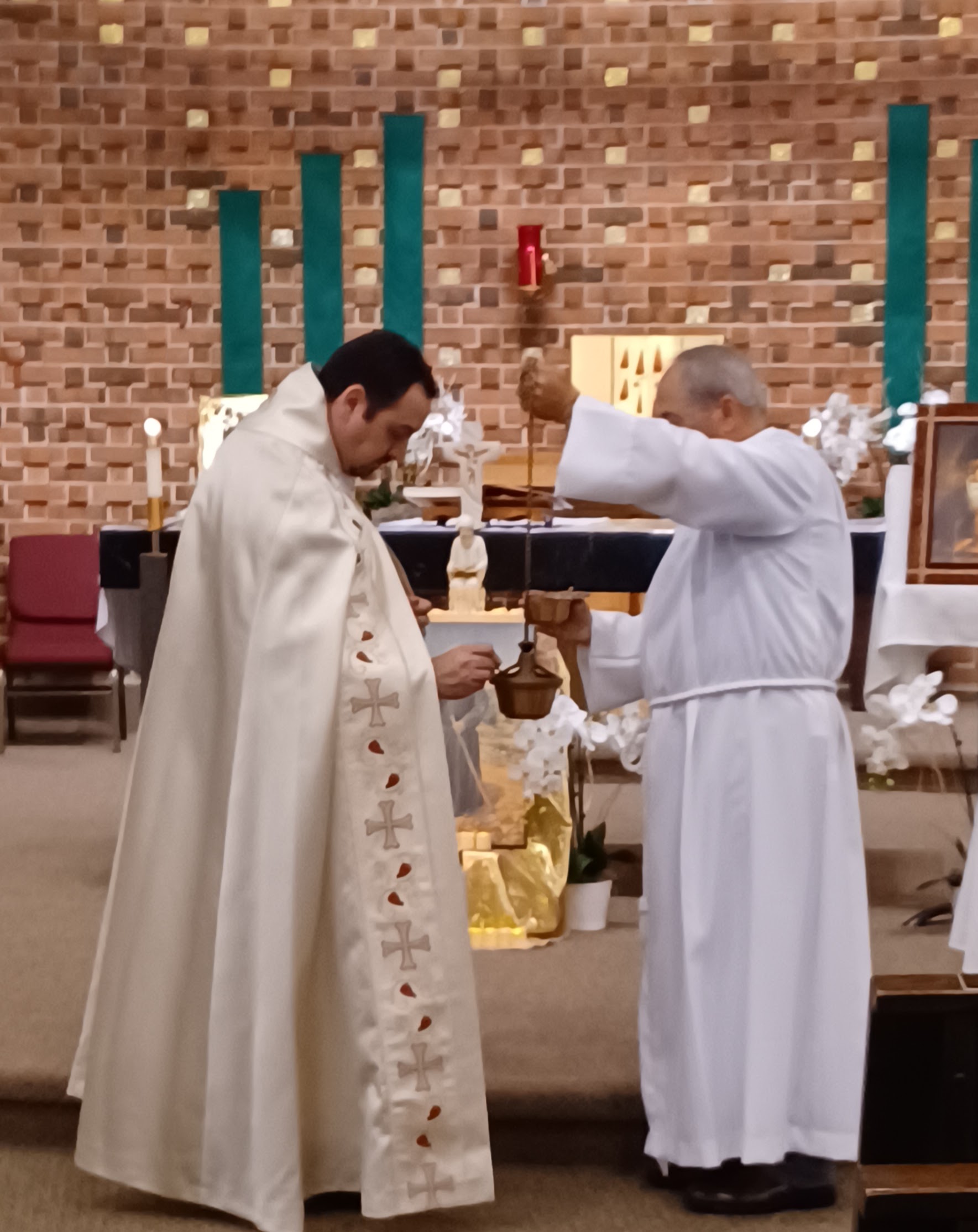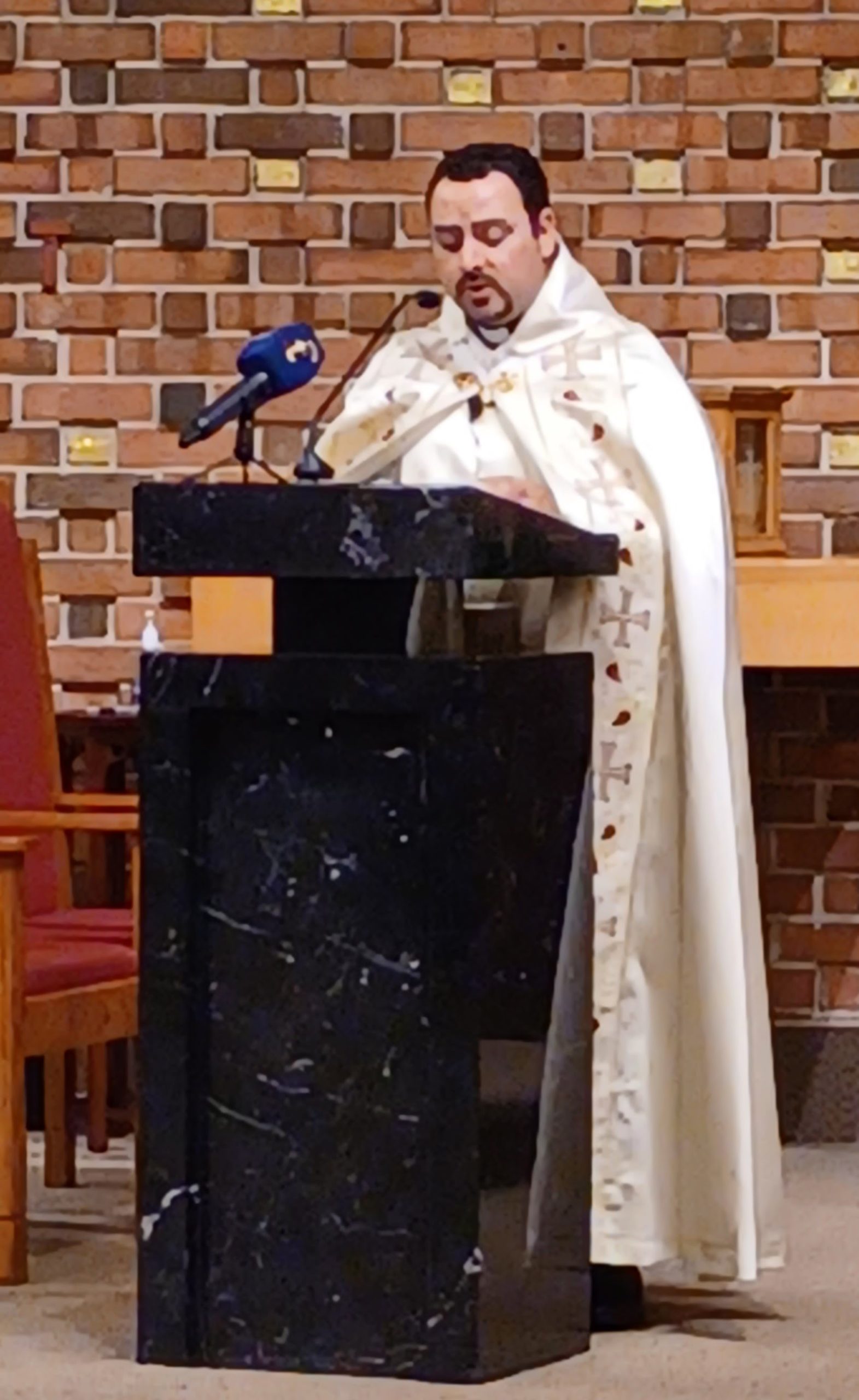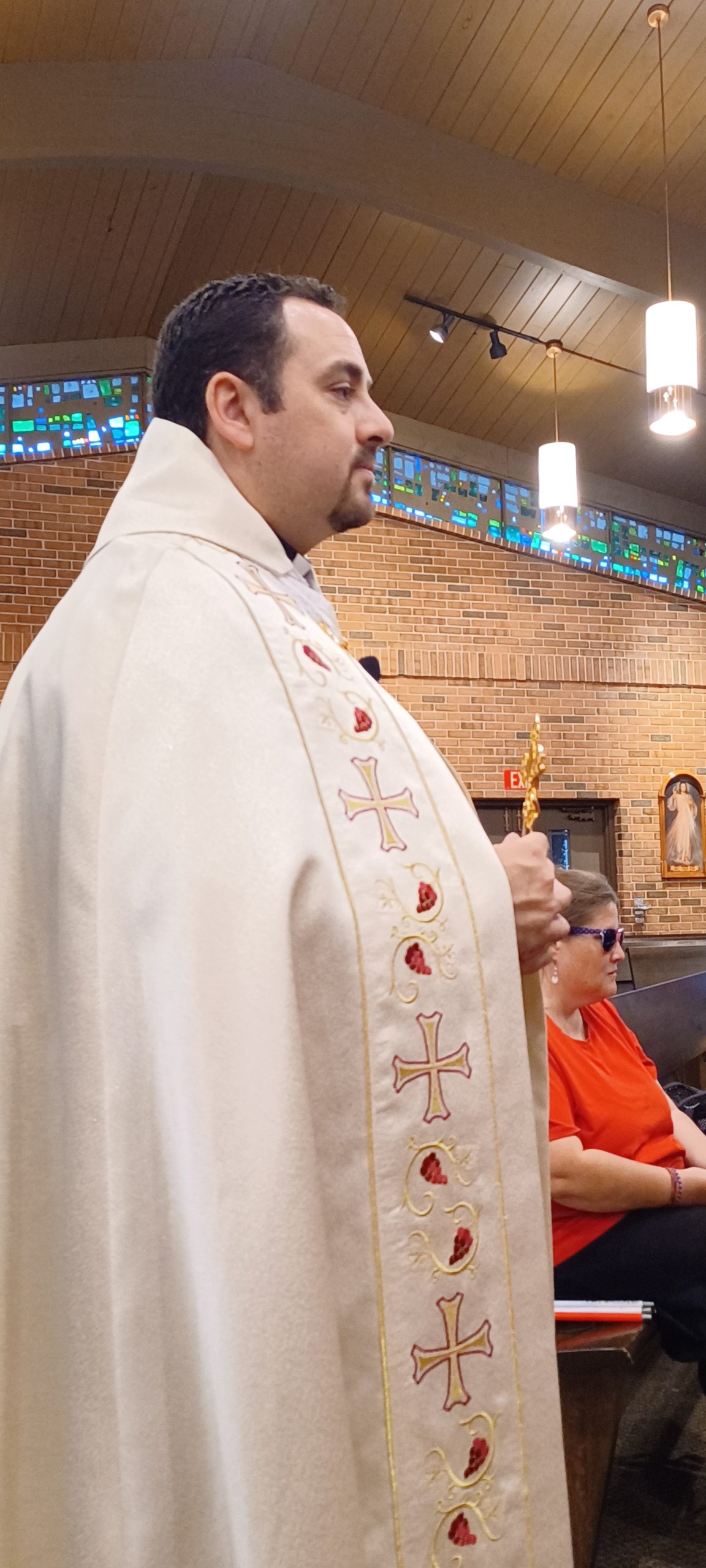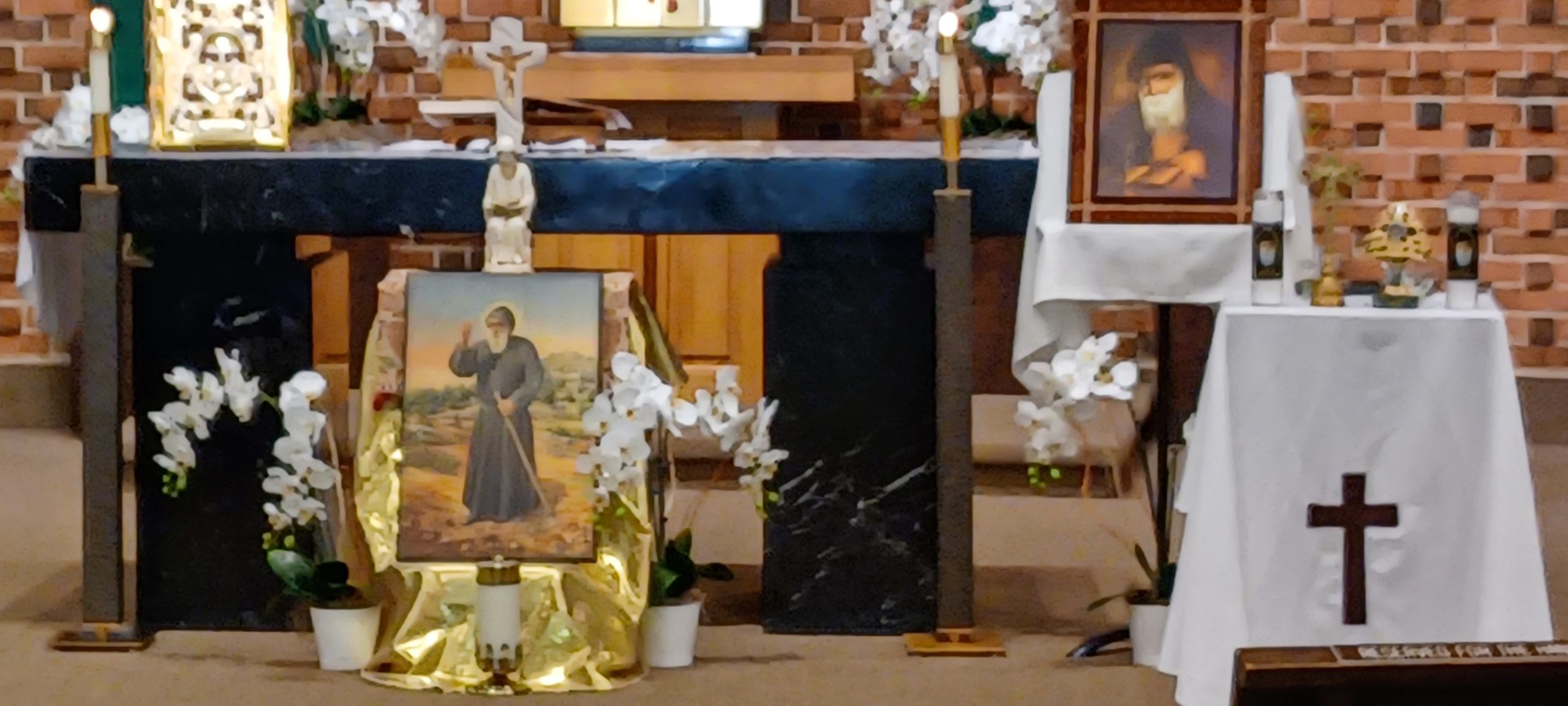
Fr. Joe Daccache (left) celebrated Mass in honor of the St. Sharbel Feast Day on Friday, July 22. (Photos by Karen Mahoney)
A celebration in honor of the St. Sharbel Feast Day brought parishioners and guests to Mass Friday, July 22, at the St. Sharbel Maronite Mission of Milwaukee. Located at St. Sebastian Catholic Church in Sturtevant, the Mission has called this church home for the past nine years.
They came forward in wheelchairs and canes. Many who were suffering from sickness or other ailments, including blindness, attended the Mass to pray to St. Sharbel in hopes of an intercession.
The special healing Mass celebrated by Fr. Joe Daccache, pastor of St. Sharbel, included a procession and St. Sharbel relics. Afterward, guests enjoyed Lebanese baked goods and viewed a film on St. Sharbel’s life.
“St. Sharbel is a great saint who did not speak much in his lifetime, but actually, his actions were known all over the world,” said Fr. Daccache. “He spent most of his life in the monastery or hermitage.”
Born in Lebanon in the 19th century, young Youssef Makhlouf dreamed of giving his life to Christ. He served his family by tending to the cows, and later, after his father died, worked on his uncle’s farm.
In 1851, when he was 23, Youssef left home and joined the Lebanese Maronite Order. After taking his vows, he took the name Br. Sharbel. He still felt called to serve Christ more deeply, and finally received permission to spend his remaining years as a hermit.
St. Sharbel ate one meal per day, performed manual labor and observed continuous silence. He slept no more than five hours per night on the ground, with a log for a pillow. Beneath his black habit, he wore a hair shirt meant to irritate his skin in mortification.
In 1898, after 23 years of prayer and penance as a hermit, St. Sharbel suffered a stroke while saying Mass and died. His brother monks buried him in a common tomb without a casket, as was customary for the order. Not long after his death, a light emanated from his tomb. After more than a month of seeing this light, the Church granted permission to open the grave to investigate. They discovered that his body was incorrupt. Additionally, they found that his body mysteriously emitted a mixture of blood and water, reminiscent of Christ’s last moments on the cross. Several doctors examined his remains and could not provide a medical explanation for either phenomenon. For the next 67 years, his body remained in perfect condition and continued to drip blood and water. Pieces of cloth soaked in this fluid were distributed as relics and credited with producing cures.
St. Sharbel was beatified by Pope Paul VI on Dec. 5, 1965, and canonized Oct. 9, 1977, by the same pope. Miracles are attributed to him worldwide, from Russia to Japan, Mexico to Brazil.
“Sharbel wanted God to be present all over the world, and here you are from Milwaukee, Kenosha, Racine and around the whole state of Wisconsin to pray for the intercession of this great saint,” said Fr. Daccache.
Sharing a personal reflection based on the letters in St. Sharbel’s name, Fr. Daccache chronicled the saint’s life, beginning with his vow of silence.
“He lived 23 years in that hermitage by himself and even denied his mother’s visits. He did not want to break the silence that was living in him and through him,” he said. “And the silence was not an absence of words, it was a prayerful silence. While some seek silence due to being mad or wanting to escape the business of life, silence for Sharbel was always connected to prayer.”
As Fr. Daccache continued reflecting on the letters in St. Sharbel’s name, he provided a brief history of his life. The letter E was of special significance to the saint.
St. Sharbel had an extraordinary devotion to the Holy Eucharist and a preference for saying Mass at 11 a.m. each day so he could spend most of the morning preparing for Mass, and the rest of the day in thanksgiving.
“E is for Eucharist,” he said. “Sharbel had a very special place for the Eucharist. This sacrament is where Jesus, the Son of Man, the Son of God is making himself present fully to each and every one of us. He never said, ‘Oh God, I am busy or too tired.’ He was all about celebrating God’s love in the Eucharist in this beautiful, blessed sacrament. Finally, Sharbel is the story of love, of life and the love of Jesus.”
The Maronites are one of 22 Catholic churches in the world and comprise one of 21 Eastern Rite Catholic Churches. Other examples of Eastern Rite Catholic Churches are the Coptic Christians in Egypt, Chaldeans in Iraq, Armenian Catholics in Armenia, and the Byzantine Catholic Church in Croatia. Eastern Rite Catholics are not Roman Catholics but under the authority of the Holy Father.
The majority of Christians in Lebanon are Maronite Catholics; they celebrate an ancient form of liturgy that has changed little in 16 centuries. The Mass, or Divine Liturgy, is generally in English, Arabic and Aramaic, the language Jesus spoke. The Bible records that followers of Christ were first called Christians in Antioch and the Apostle Paul and Barnabas preached there.
Maronites take their name from St. Maron, a member of the early Antiochian church who moved to the mountains and became a hermit.
If You Would Like to Attend
Maronite Divine Liturgy
Sundays 11:30 a.m.
St. Sebastian Parish
3126 95th St., Sturtevant
For information: Vera Maalouf, vsmaalouf@gmail.com






